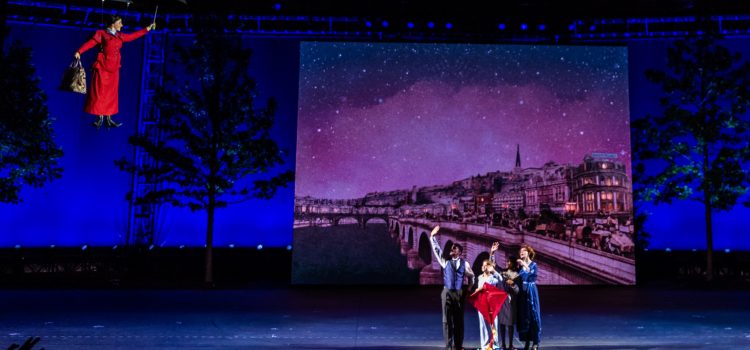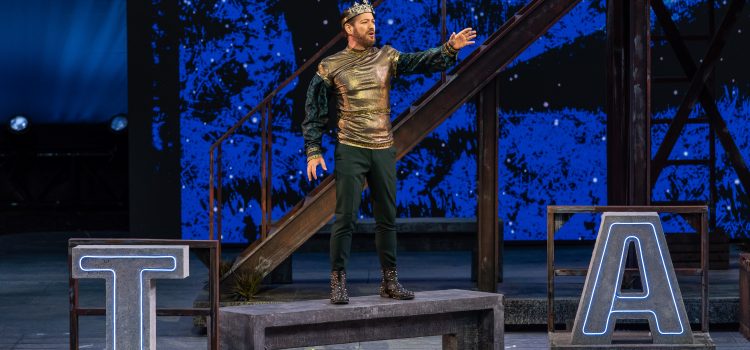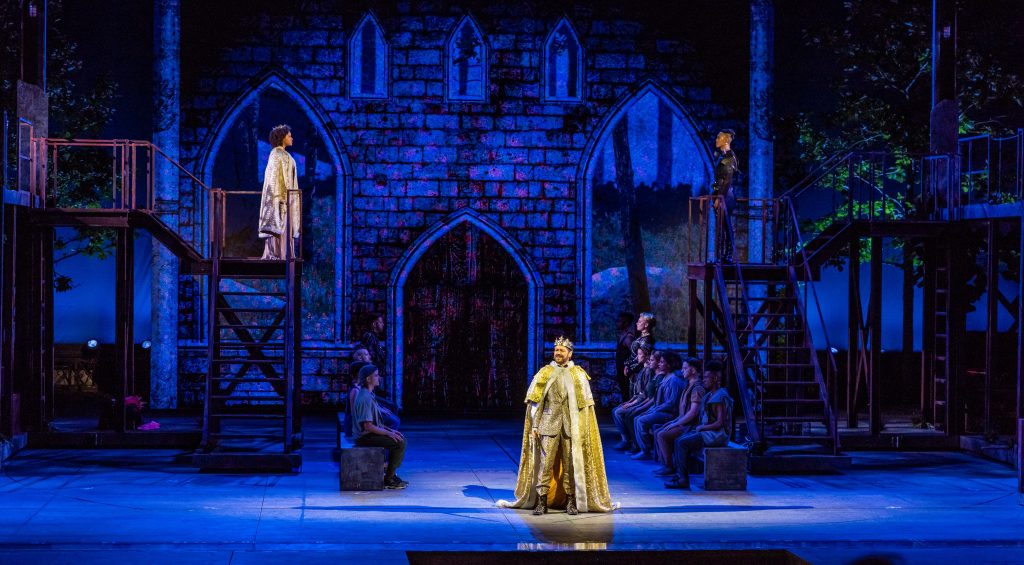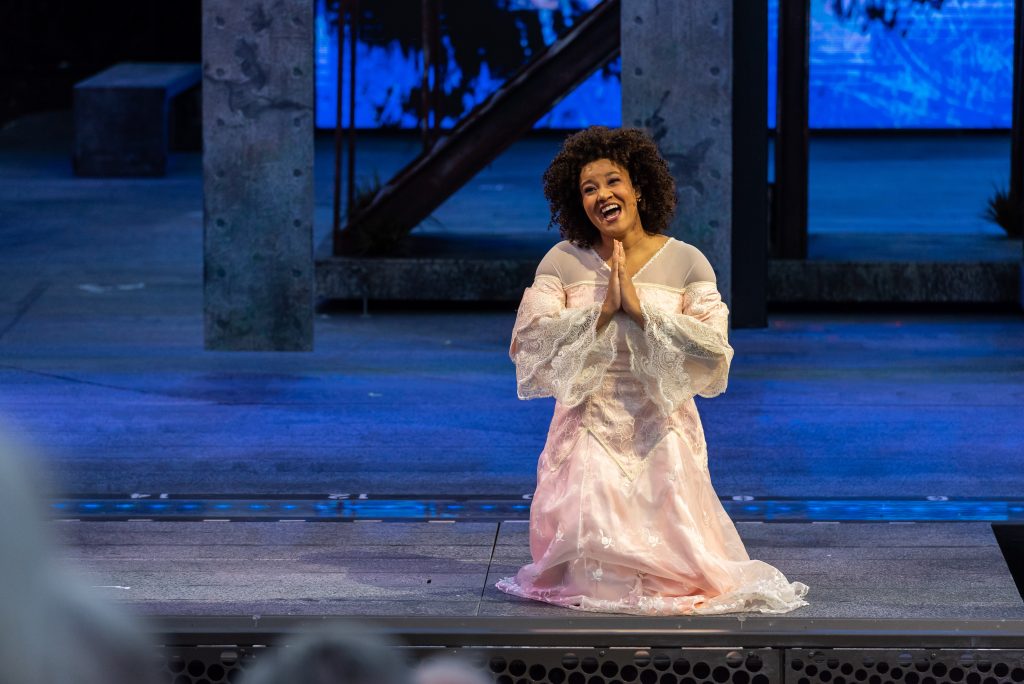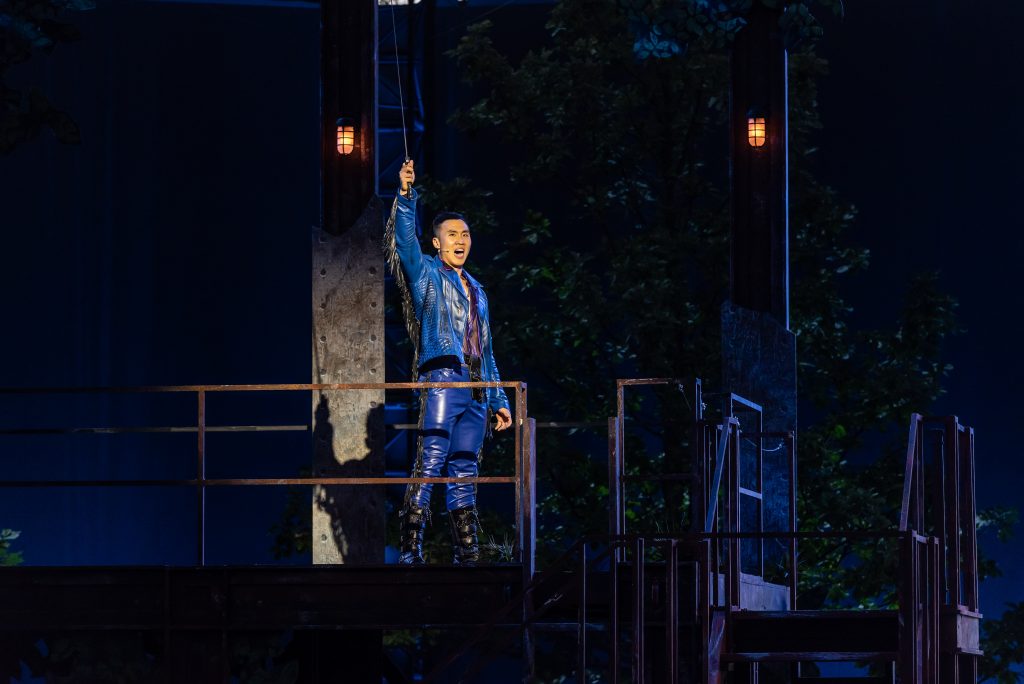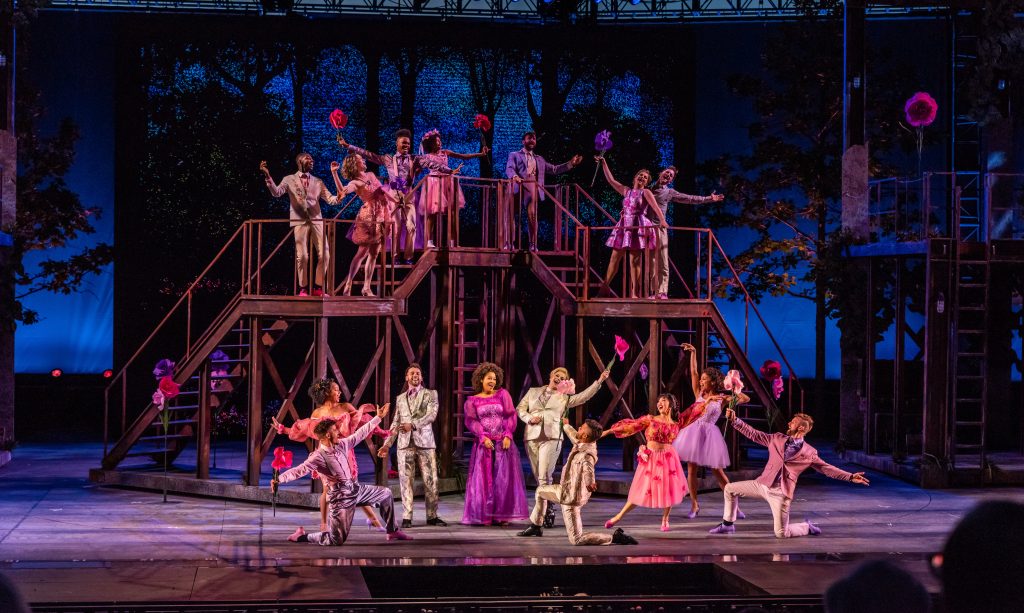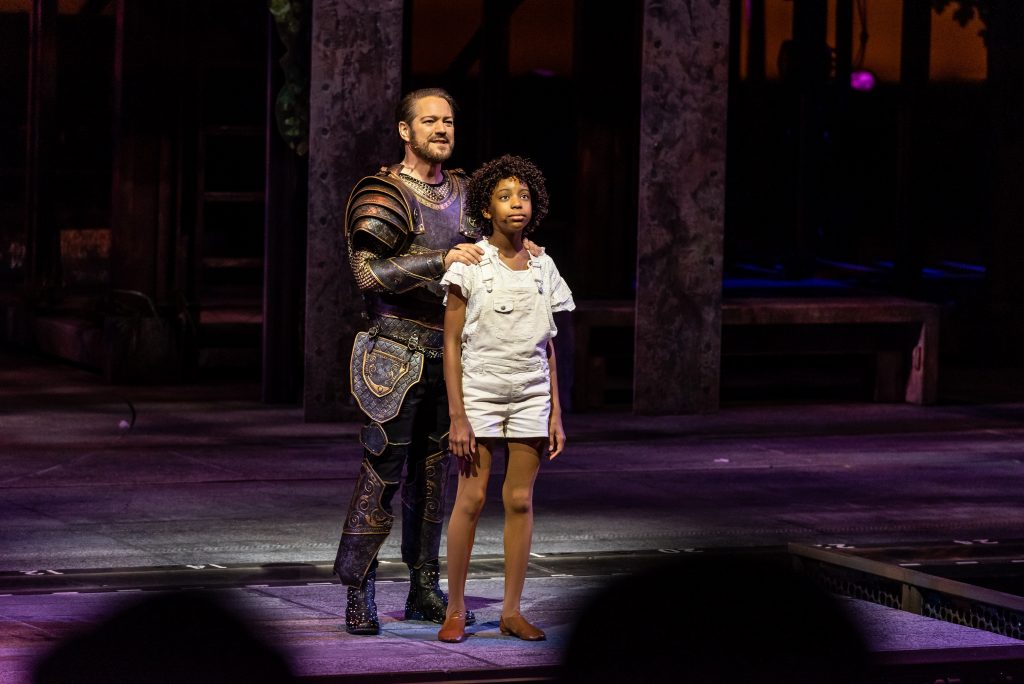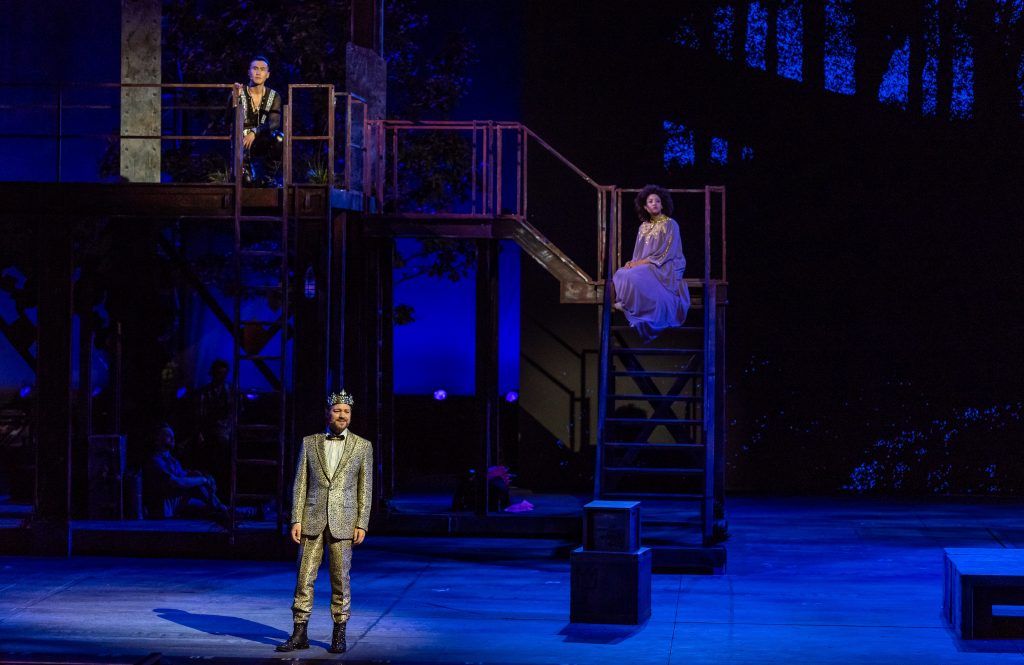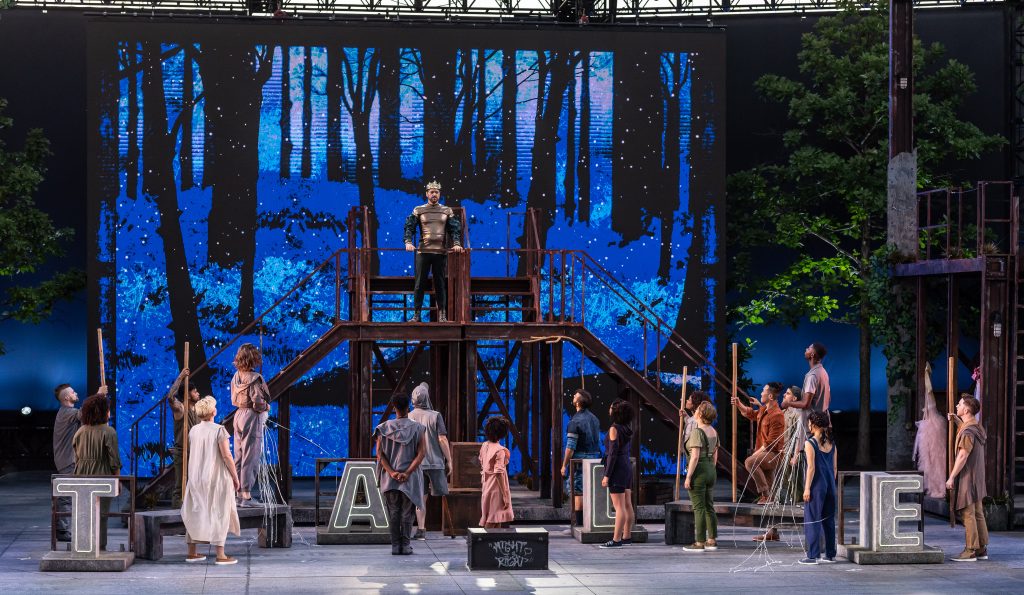By Lynn Venhaus
When the titular character floats in using her umbrella, carried by the East wind to 17 Cherry Tree Lane in London, it’s a welcome jolt of joy — signaling that a merry time is ahead in this stage musical version of “Mary Poppins.”
And this vibrant, candy colored Muny production of the beloved magical nanny tale is as whimsical as you remember.
Director John Tartaglia makes it sparkly and this cast of 75 brings the magic that he is striving for in his sixth show, hoping to see smiles on a summer night.
The nostalgia factor is high, recalling the sublime Oscar-winning performance of Julie Andrews in the iconic 1964 Disney movie, which is based on P.L. Travers’ series of children’s books, eight of them starting in 1934.
Disney’s crowning live-action achievement was the highest-grossing film of 1964 and garnered 13 Oscar nominations, winning five: (actress, editing, original music score, visual effects, and song for “Chim Chim Cher-ee”). During Walt’s lifetime, it was the only one of his films to earn a Best Picture nomination.
With Travers’ permission, master producer Cameron Mackintosh turned the tale into an acclaimed stage musical in London in 2004, which opened on Broadway in 2006, and continued for more than six years. It closed on March 3, 2013, after 2,619 – the 24th longest-running show in Broadway history.
The show is a mix of the movie and the books. The sentimentality is part of its appeal, and this ensemble blends both freshness and fondness for the traditional qualities to please a new generation.
Jeanna de Waal is an ideal Mary, moving with ease, popping in and out with her grace and regal bearing. She is a good sport for her spectacular flying segments, with seamless effects work by ZFX.
For a little extra insight into the mystical nanny, she projects an air of mystery, indicating there’s more than meets the eye. She also sings like a dream, smoothly cavorting in the newer song “Practically Perfect” and a reworked setting for “A Spoonful of Sugar.”
In fact, this is a cast of glorious voices.
The charismatic and charming Corbin Bleu uses his considerable song and dance skills as the lovable happy-go-lucky Bert. It’s a triumphant return to the Muny following his sensational turn as Don Lockwood in “Singin’ in the Rain” in 2018. He had dazzled critics and audiences alike, winning the St. Louis Theater Circle Award for Best Actor in a Musical.
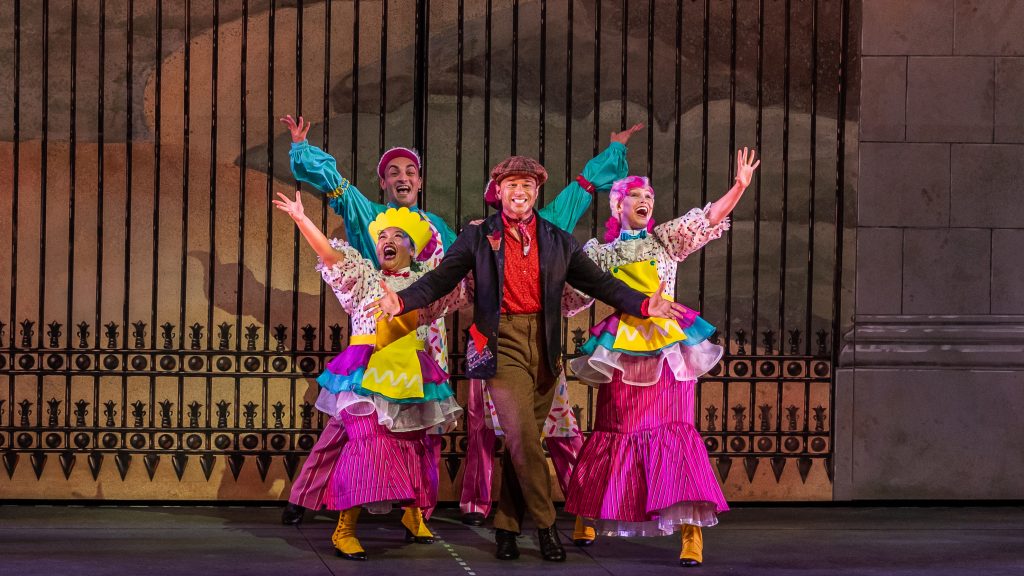
Bleu, who first came to prominence as Chad in the “High School Musical” movies, works well with De Waal and the ensemble — and has a few cool moves I won’t spoil.
That score by Robert B. and Richard M. Sherman is unforgettable – and in fact, some Muny patrons sang along. But the musical is not a replica of the film, for “I Love to Laugh” has been omitted, as has “Sister Suffragette,” “Stay Awake” and “Fidelity Fiduciary Bank.”
With a few exceptions, the new songs by George Stiles and Anthony Drewe do not seem to be as catchy as the Sherman brothers’ collaborations. Even at a 2 hour and 35 minute-run time, “Anything Can Happen,” delivered in two parts, seems to drag on and on. A little editing of some numbers would have made for a tighter experience.
“The Life I Lead” has been replaced by “Precision and Order,” sung by the stern banker, George Banks. In Julian Fellowes’ book, George is revealed to have had a strict childhood, and the parents are more dysfunctional, with Winifred Banks a former actress who can’t seem to fit in to the elite society, and the two children, Jane and Michael, are naughtier.
The real-life husband-and-wife duo of Nehal Joshi and Erin Davie are splendid in vocals and their character development. Their new songs include “A Man Has Dreams” and “Being Mrs. Banks.” I do wish Mrs. Banks was still a suffragette, as Glynis Johns was so robustly in the film.
The kids are brattier – as played by Laila Fantroy and Gabe Cytron, so they are not likable, especially when acting entitled and wreaking havoc in the kitchen, but their growth results in more compassionate youngsters. Whew!
A new character, Robertson Ay, is a screwball addition, and Barrett Riggins, so deliciously wicked in “Camelot,” shines as the bumbling oh-so-not-helpful houseboy.
Chipper Jade Jones has the versatile three-peat of Katie Nanna, Mrs. Corry and Miss Smythe.
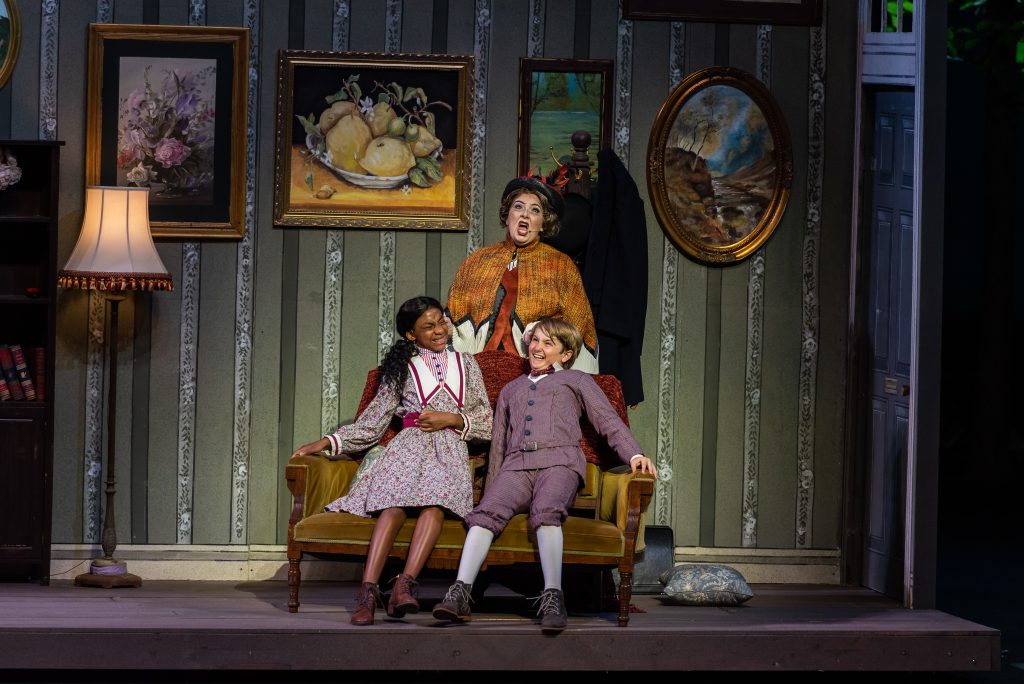
Debby Lennon, two-time St. Louis Theater Circle Award winner, is a hoot as the “Holy Terror!” – aka George’s cruel childhood nanny Miss Andrew – who arrives to get everyone back in ship-shape after the breezy frolics with Mary. She is overbearing in “Brimstone and Treacle Parts 1 and 2.”
A masterful Darlesia Cearcy brings the house down as the Birdwoman at the park, with a superbly executed rendition and reprise of “Feed the Birds.”
Other high points include the jaunty stroll through the park “Jolly Holiday,” the robust showstopper “Step in Time,” a bubbly “Supercalifragilisticexpialidocious” at Mrs. Corry’s sweet shop and a wondrous “Let’s Go Fly a Kite” with the ensemble placed through the audience with red kites.
First seen in 2013 when the show was led by Muny fan favorites Jenny Powers and Rob McClure, this version is as enchanting, with Tartaglia’s penchant for puppetry giving an added ‘oomph.’
He has created another Muny moment with puppeteers swarming the stage with flocks of birds, produced by puppet designer Eric Wright of Puppet Kitchen International Inc. It’s a marvelous sight.
Tartaglia, such a bouncy personality as evident through his Muny performances (The Genie in “Aladdin,” The Cat in the Hat in “Seussical,” Hysterium in “A Funny Thing Happened on the Way to the Forum — St. Louis Theater Circle Award for Best Supporting Actor in a Musical in 2017), has brought a sunny outlook to his productions here.
The director of “Matilda” 2019, Annie” 2018, “The Wizard of Oz” 2016, “Disney’s Tarzan” in 2014 and “Shrek” 2013 is again inspired by the tasks at hand, no doubt influencing his creative choices.
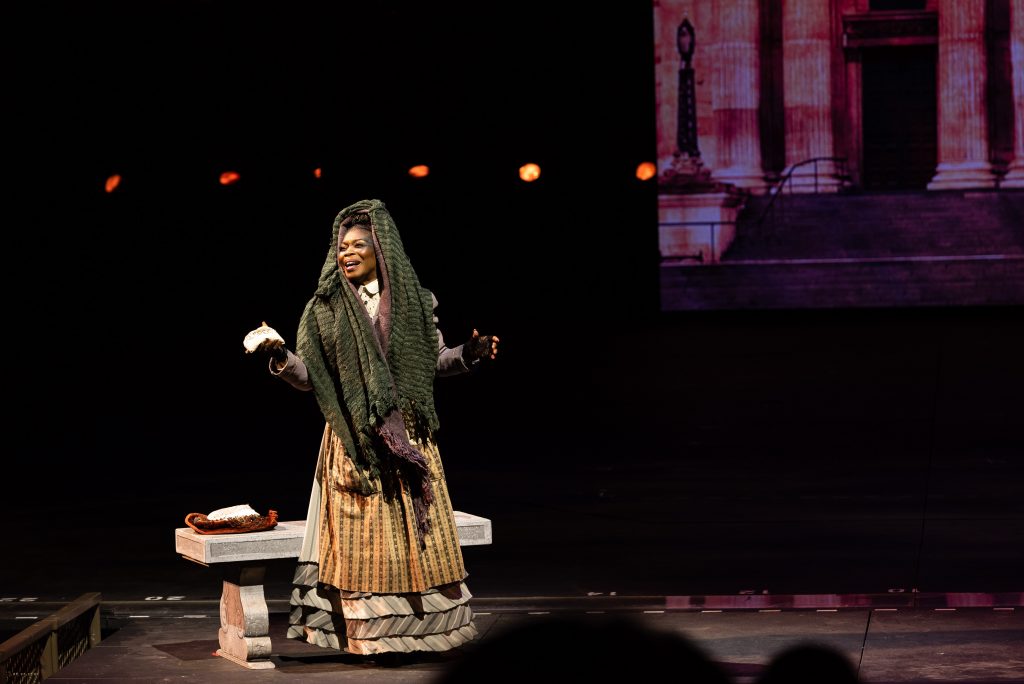
A crackerjack production team has delivered an attractive look and encouraged high spirits throughout, even with performers dealing with oppressive summer heat. Music Director Brad Haak and Choreographer Patrick O’Neill focused on peppy musical and dance numbers for fluid movement (with a high percentage of youngsters in the audience).
The sights — Paige Hathaway’s production design, Robin L. McGee’s costume design, Kelley Jordan’s wig design and Alex Basco Koch’s video designs are true to the 1910 time of Edwardian London, but with pizzazz.
It’s also nice to see such local treasures as Zoe Vonder Haar (as Mrs. Brill), Whit Reichert (as Admiral Boom/Bank Chairman), Jerry Vogel (as Park Keeper, Von Hussle, ensemble), Rich Pisarkiewicz (Policeman/ensemble), and Lynn Humphrey (Miss Lark/ensemble) back together on the Muny stage.
Does “Mary Poppins” have the same appeal to today’s youths like the movie did for my generation? Not sure if it is a home run as much for them as it is for adults. Nevertheless, the audience left humming a happy tune.
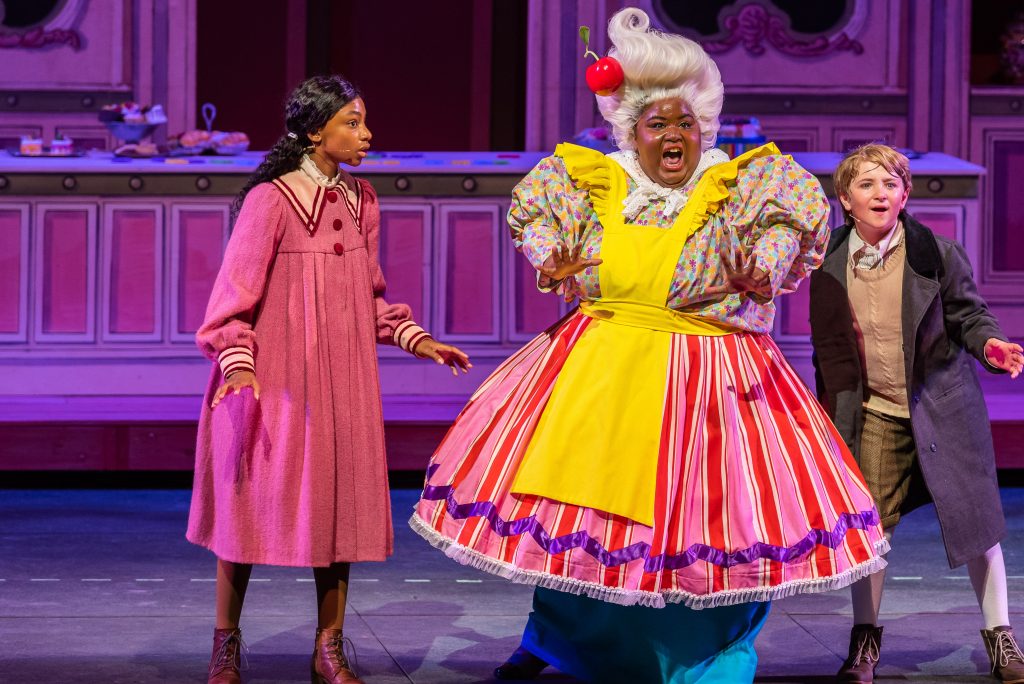
The Muny presents the musical “Mary Poppins” July 5-13 at 8:15 pm. on the outdoor stage in Forest Park. For more information, visit www.muny.org.
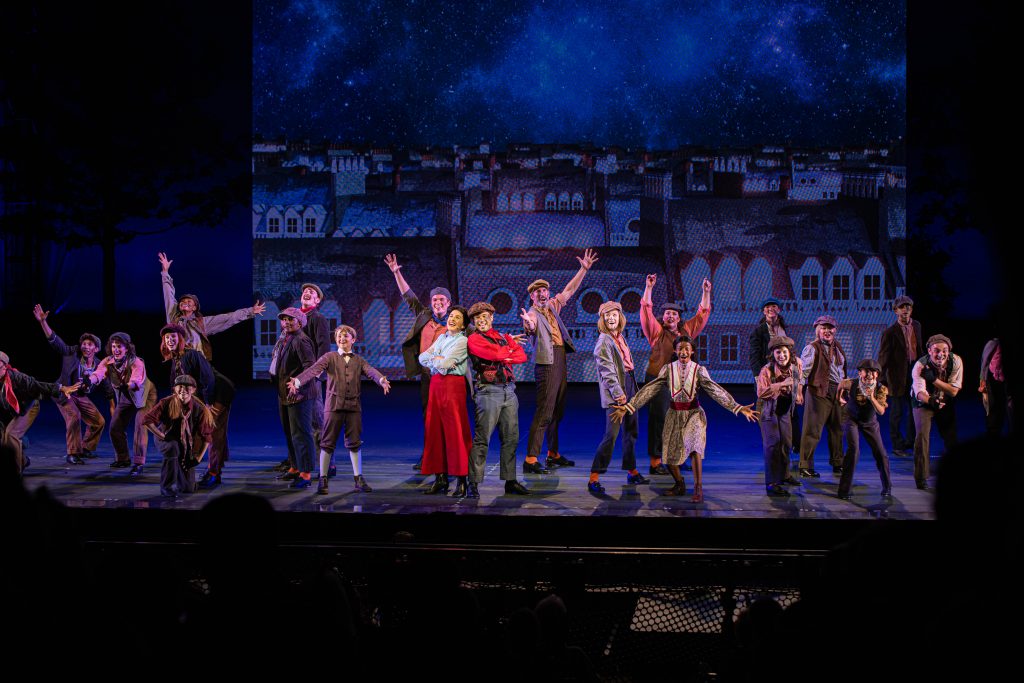

Lynn (Zipfel) Venhaus has had a continuous byline in St. Louis metro region publications since 1978. She writes features and news for Belleville News-Democrat and contributes to St. Louis magazine and other publications.
She is a Rotten Tomatoes-approved film critic, currently reviews films for Webster-Kirkwood Times and KTRS Radio, covers entertainment for PopLifeSTL.com and co-hosts podcast PopLifeSTL.com…Presents.
She is a member of Critics Choice Association, where she serves on the women’s and marketing committees; Alliance of Women Film Journalists; and on the board of the St. Louis Film Critics Association. She is a founding and board member of the St. Louis Theater Circle.
She is retired from teaching journalism/media as an adjunct college instructor.

